
India-Specific Outcomes: Cashless Pathways, Follow-Up Adherence, and Real-World KPIs for Clinicians
Prosthetic care in India is changing very quickly.More people are receiving quality devices, more hospitals
Buy Products, Consumables and Accessories from Robo Bionics Dismiss
Skip to content
Losing a finger is something no one prepares for. It can happen in seconds—one slip, one accident, one unexpected turn—and suddenly, life looks and feels very different.
For many people, it’s not just about pain. It’s about the shock. The fear of what comes next. The worry of whether life will ever feel normal again.
If you or someone you love has gone through a finger amputation, this guide is for you. We’ll walk through what causes finger loss, what to expect afterward, and—most importantly—what you can do to move forward with strength, clarity, and hope.
You’re not alone. Let’s begin.
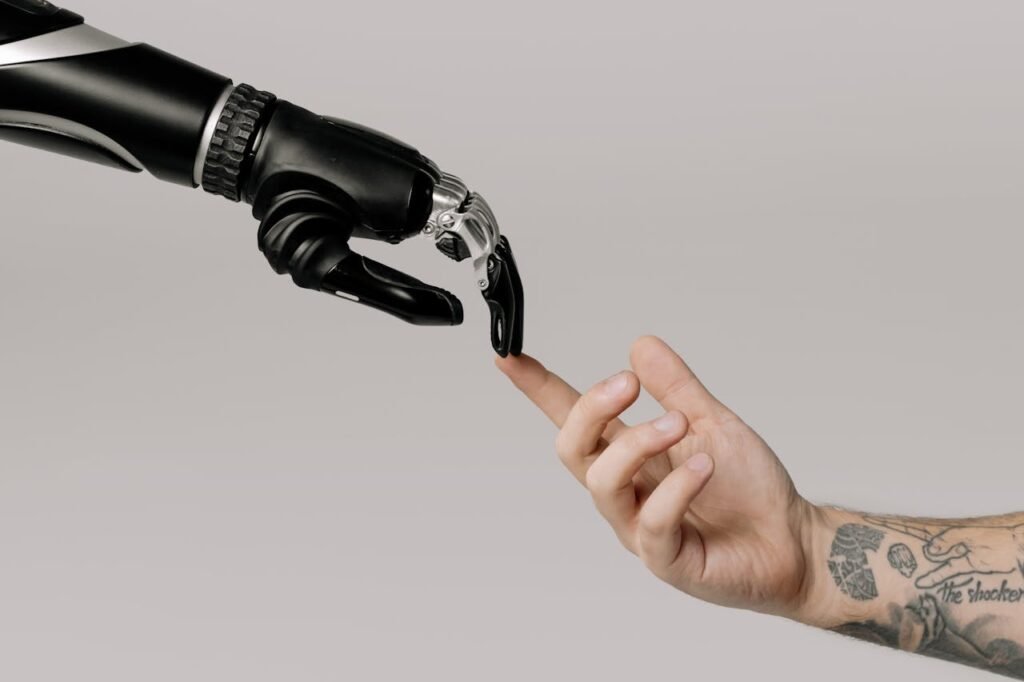
Finger amputation simply means the removal or loss of part—or all—of a finger. Sometimes, only the tip is affected. Other times, the entire finger is gone. Each case is different, and so is the impact it has on daily life.
Your fingers help with nearly everything. Holding a pen. Zipping your bag. Eating food. Texting someone you love. Even losing one finger can change how you move, work, and connect with others.
But understanding the cause helps you deal with the outcome. So let’s talk about what leads to finger amputations in the first place.
This is the most common cause—especially in India. Every day, workers in factories, farms, and construction sites use powerful machines. And all it takes is one moment of distraction for something to go very wrong.
Workers in textile mills, meat processing plants, sawmills, and metal shops face the highest risk. Press machines, cutters, rollers—all of them can cause serious injuries to the hands. And sadly, safety gear is often missing or ignored.
In many of these cases, fingers get crushed or cut badly enough that they cannot be saved. Immediate surgery becomes the only option.
In high-speed crashes, especially two-wheeler accidents, hands are often injured when people try to break their fall or shield themselves. Broken glass, impact with the road, or getting stuck under a vehicle can lead to partial or full finger loss.
This is more common among delivery workers, drivers, and commuters who don’t wear gloves or protective gear.
In rural India, farming is still done with powerful tools and machines—many of which are outdated or unsafe. Threshers, choppers, and plough machines often lack guards or safety systems.
Fingers can get caught, pulled in, or crushed beyond repair. What makes it worse is that medical help may be far away. By the time someone reaches a hospital, it’s too late to save the finger.
High-voltage electrical injuries can cause severe burns that destroy the skin, muscles, and bones of the fingers. Sometimes, amputation is done to stop the spread of infection or to remove dead tissue.
This is common in electricians, line workers, or anyone working with open wires or transformers.
This might surprise you, but untreated infections can also lead to finger amputations. People with diabetes are at high risk, especially when small cuts or wounds don’t heal properly.
Gangrene can set in quickly. If doctors can’t stop it with medicine, they must remove the affected part of the finger to save the rest of the hand—or even the body.
In extreme cases, like exposure to freezing cold or direct flames, the tissues in your fingers can die. These are rare in India but do happen in mountainous regions or in fire accidents. When tissue death occurs, amputation becomes necessary.
Some people are born with underdeveloped or non-functional fingers. Others may have conditions like tumors, nerve damage, or circulatory problems that require surgical removal of part of a finger. These are less common but still important to understand.
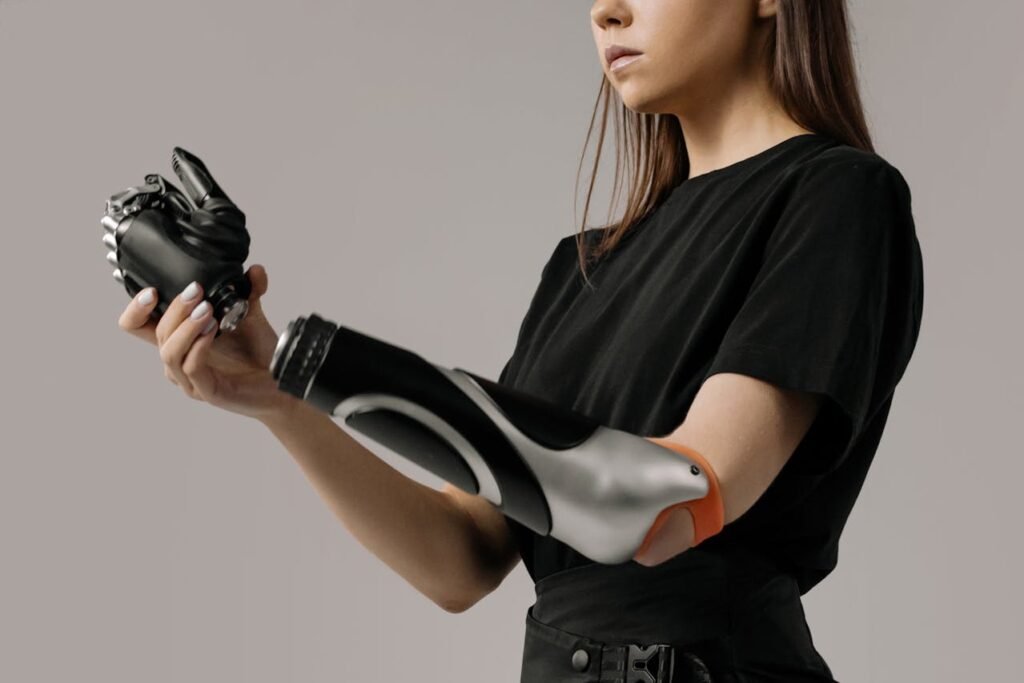
The first few hours after a finger is lost are filled with urgency. Doctors focus on stopping bleeding, preventing infection, and managing pain. If the finger is cut off cleanly, they may try to reattach it through microsurgery. But this only works if:
If reattachment isn’t possible, doctors clean the wound, shape the finger stump, and close it with stitches. You may stay in the hospital for a day or two—or longer, if the injury is serious.
Pain, swelling, and fear are common. But with proper care, this phase passes quickly.
Once the wound is closed, your body starts healing. This can take a few weeks. You’ll need to keep the area clean, take medicine, and follow up with your doctor.
You might notice strange sensations—like your finger is still there. This is called phantom pain. It’s normal and usually fades over time. Simple therapies like mirror exercises or gentle massage can help.
Your other fingers may feel stiff or weak. That’s why hand therapy is important. A physiotherapist can teach you how to keep your hand flexible, prevent scar tissue, and slowly regain strength.
Emotionally, this is a tough time. You may feel angry, sad, or anxious. You may avoid going out or talking about your injury. These feelings are normal. But don’t ignore them. Talking to a friend, therapist, or even other amputees can help you heal faster.
The most important thing you can do now is learn. What kind of amputation do you have? What’s your range of motion? Are you ready for a prosthetic? These answers help you plan the next steps.
Talk to a prosthetist—a specialist who builds artificial limbs. They can assess your hand and tell you what kind of device might help.
For finger amputations, there are many options available today. Some are purely cosmetic. Others offer real movement and grip. Choosing the right one depends on your needs, goals, and budget.
At Robobionics, we meet you where you are. We’ve helped students, farmers, drivers, teachers, and techies get back to work, school, and life with our Grippy Mech Finger and other prosthetics designed right here in India.
Mechanical finger prosthetics are simple, strong, and affordable. They don’t need electricity. They bend and grip when you move your hand or press a button. They help you hold cups, write with pens, or even use your phone again.
If you’ve lost one or two fingers, the Grippy Mech Finger is a great place to start. It’s lightweight, adjustable, and proudly made in India—at a fraction of the cost of imported devices.
You can schedule a demo with us and try it for yourself: robobionics.in/bookdemo
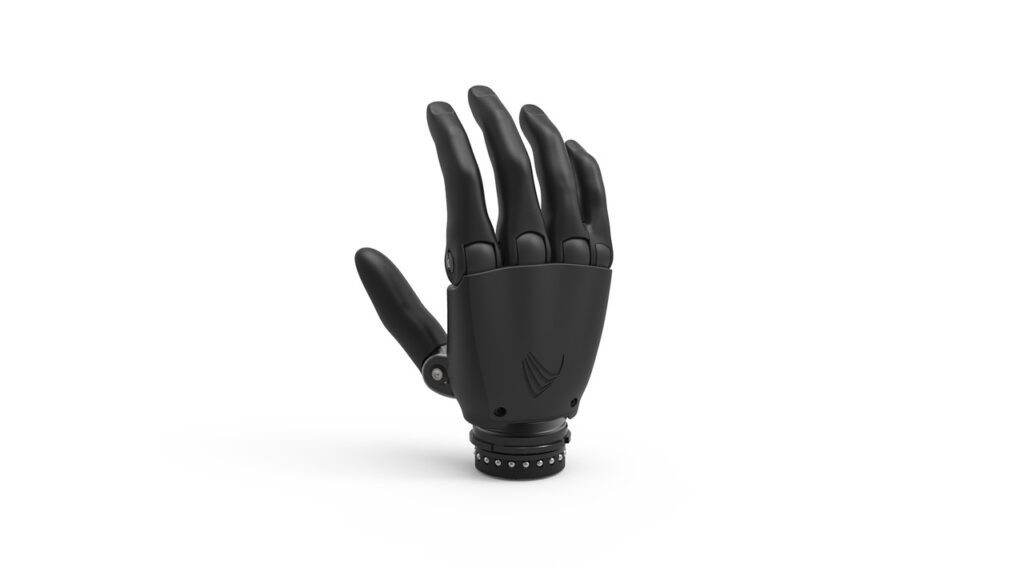
Choosing a prosthetic can feel overwhelming at first. There are many types out there, each with different features, designs, and prices. But don’t worry. The goal isn’t to pick the fanciest one. It’s to find what fits your life best—what helps you feel confident, capable, and free again.
These are designed to look real. They match your skin tone, shape, and size. They don’t move, but they can make you feel less self-conscious, especially in public. Some people choose them if they don’t need to do much with their hands or if they’re not ready for a functional device just yet.
Cosmetic fingers are usually made of silicone. They slip over your stump like a glove. They’re easy to wear and take off. But since they don’t help with grip or movement, they’re best for looks, not tasks.
These are a step up. They still don’t move by themselves, but they are shaped to help with simple tasks—like pushing buttons, supporting light objects, or typing. They give your hand some structure back. Many people find them helpful in day-to-day life.
Some designs even allow you to lock the finger in place so you can hold a pen, carry a bag, or stabilize a phone. They’re often used by people who’ve lost more than one finger but still have strong wrists or palms.
Now we’re talking about function. These types move when you move. They are often connected with tension systems that use the natural motion of your hand or wrist to open and close. There’s no motor, no battery—just simple mechanics.
At Robobionics, our Grippy Mech Finger falls in this category. It gives you control, grip strength, and precision—all with easy, low-effort movement. You can write, type, lift objects, and more. It’s also tough, reliable, and doesn’t need charging.
This option is great for anyone who needs a practical solution without the high cost of bionic devices. And since it’s made in India, it’s built for Indian hands, Indian weather, and Indian life.
These are the most advanced. They run on sensors that read signals from your muscles. When you think about moving your finger, the prosthetic responds. It’s fast, natural, and powerful. But it’s also expensive.
If you’ve lost multiple fingers or a large part of your hand, a full bionic system like the Grippy Bionic Hand might be a better fit. It combines smart control with our patent-pending Sense of Touch™ technology—so you don’t just move, you feel.
Myoelectric prosthetics work best when the muscles in your forearm are strong and healthy. They also need charging and regular care. But for people who want high performance, they are life-changing.
Getting a prosthetic is only the beginning. You’ll need time to adjust. It’s not about snapping it on and expecting everything to go back to normal. It’s about learning, practicing, and building a new rhythm.
Start slow. Wear your prosthetic for short periods. Try simple tasks like holding a spoon, tapping your phone, or gripping a bottle. Notice how it feels. Notice what’s hard and what’s easy.
Your brain needs to get used to the new finger. So do your muscles. You might feel tired or awkward at first. That’s completely normal.
If you’re using a mechanical or myoelectric finger, your prosthetist will guide you on positioning, grip pressure, and maintenance.
An occupational therapist can be a huge help. They’ll give you daily tasks to build confidence and skill. These include:
They may also help with emotional support. A good therapist knows that progress isn’t just about the hand—it’s about the whole person.
At Robobionics, we also offer a Gamified Rehabilitation App that turns therapy into a game. It’s fun, engaging, and makes daily exercises feel less like a chore. You can track progress and celebrate small wins.
Improvement takes practice. Use your prosthetic every day, even if it’s just for a few minutes. The more you use it, the more natural it feels. Don’t rush. Give yourself the grace to grow at your pace.
And don’t hesitate to reach out for adjustments. A finger that feels too tight or too loose won’t help. We offer free fittings and follow-ups because we believe no one should struggle alone.
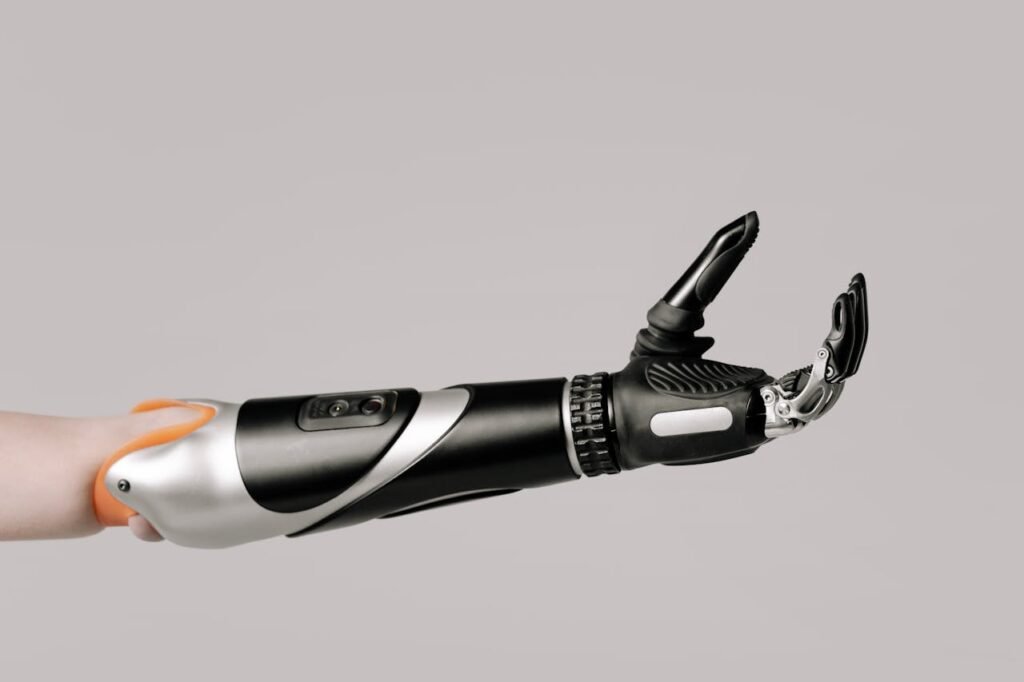
Finger amputation doesn’t just affect your hand. It affects how you see yourself. How you move through the world. How you relate to people. It’s okay to feel different. It’s okay to grieve. But it’s also okay to adapt and move forward.
Tasks you never thought about before now require extra attention. Zipping pants. Washing dishes. Carrying bags. Even simple things like buttoning a shirt or putting on socks can feel harder.
But with time, you develop new ways. Maybe you use your palm more. Or your other hand steps up. Or you rely on a tool or adaptive device. These changes become habits—and soon, life flows again.
Many people worry about whether they can return to their jobs or classes. The answer is usually yes—with a little planning. Let your employer or school know what support you need. You may be surprised at how flexible they are.
If you work with your hands—like in carpentry, tailoring, or typing—a well-fitted prosthetic finger can restore most of your abilities. We’ve worked with electricians, farmers, engineers, and chefs. And they’ve all found ways to get back to what they love.
It’s natural to feel awkward in public at first. You may wonder if people are staring or judging. But remember—your story is one of courage, not loss.
Wearing a prosthetic can become a point of pride. It shows your strength. Your resilience. And your refusal to give up.
Talk about it if you want. Or don’t. The choice is yours. What matters is that you own your journey, on your terms.
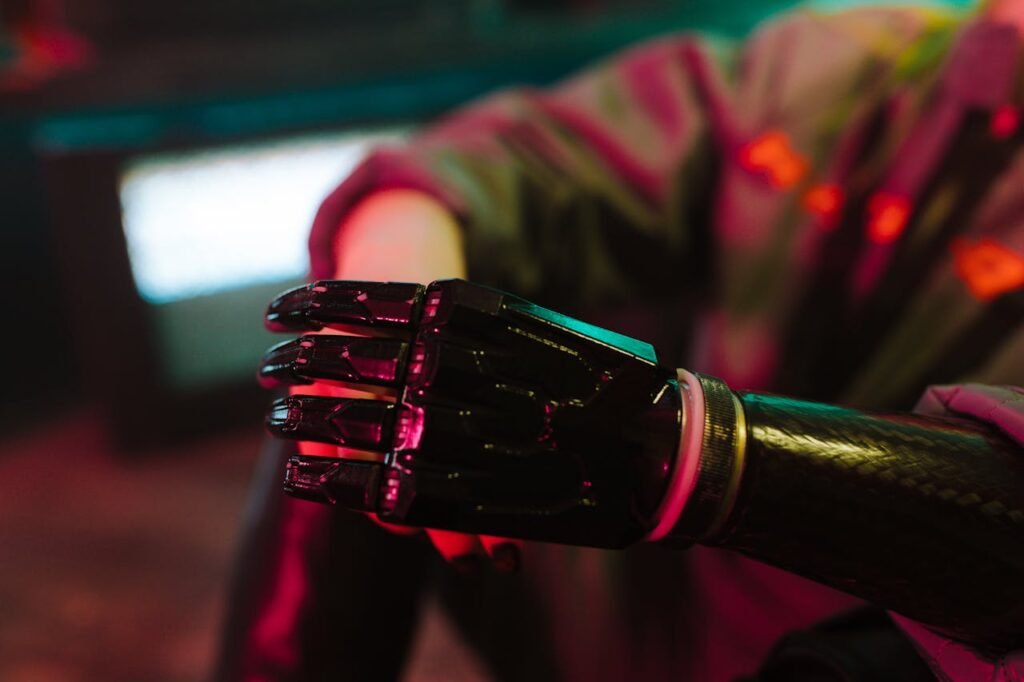
Your prosthetic finger is part of your everyday life. Like any tool you rely on daily, it needs consistent care to work well. Regular cleaning and maintenance help avoid discomfort, breakdowns, and unexpected costs. Even simple steps can make a big difference in how long your prosthetic lasts and how comfortable it feels.
Use a soft, damp cloth to wipe down the prosthetic at the end of each day. Keep moisture and dust away from moving parts. If your prosthetic uses a liner or strap, clean those separately and let them dry fully before reuse. Never use harsh chemicals unless your prosthetist says it’s safe. The skin under your prosthetic also needs care. Keep it clean, dry, and watch for any signs of irritation.
If your prosthetic finger starts feeling loose, squeaky, or uncomfortable, it’s time for a check-up. Small adjustments can restore comfort and function quickly. At Robobionics, we provide regular servicing and free consultations to ensure everything works smoothly and safely, for the long haul.
After finger loss, many people feel a mix of emotions—shock, grief, even guilt. These feelings are normal. Healing emotionally takes time, just like healing physically. You may benefit from speaking to a counselor or joining a support group. Don’t bottle things up. It’s okay to feel vulnerable, and it’s even more okay to seek support.
The journey back to confidence often starts with small wins. Holding a cup again. Typing a message. Going out without hiding your hand. These moments remind you of your strength. Over time, you’ll feel proud—not just for surviving the injury, but for growing through it.
Life after amputation isn’t about going back—it’s about moving forward in a new way. You’ll adapt to daily routines, discover creative solutions, and become more aware of your body and abilities. And soon enough, this “new normal” will start to feel natural.
As your needs change, your prosthetic should keep up. If your current finger doesn’t help you do what you need—or feels too basic for your work or lifestyle—it may be time to look at newer options. Upgrading doesn’t mean starting over. It means choosing better tools for a better life.
Maybe you started with a cosmetic or basic mechanical finger. Now, you might want stronger grip, more comfort, or a design that supports new skills. Robobionics offers a range of solutions that grow with you—from passive to functional, mechanical to bionic. Whatever your goal, we help you get there with care and personal attention.
Sometimes, the best support doesn’t come from professionals—but from people who’ve been in your shoes. Hearing how someone else adapted, worked, or overcame challenges can be deeply comforting. Our community includes hundreds of users across India, ready to share, guide, and inspire.
As you gain experience with your prosthetic, you might feel ready to help others. Becoming a mentor isn’t just a way to give back—it’s also a powerful step in your own healing. Robobionics supports and celebrates mentors who make this journey easier for others.
We organize hands-on demo days, awareness drives, and support camps all over India. These events are about more than prosthetics—they’re about breaking stigma, sharing hope, and connecting people who might otherwise feel alone.
Finger amputations may sound like a rare issue—but for millions in India’s workforce, it’s a daily risk. From factory workers to field staff, from delivery agents to machinists, hand injuries are one of the leading causes of disability.
When a worker loses a finger, the impact is not just personal. It affects productivity, morale, and operational continuity. For businesses, this can mean increased insurance claims, lost man-hours, and higher training costs for replacements.
But there’s an opportunity here—not just to reduce risk, but to lead with responsibility, innovation, and care.
Most companies focus on prevention. That’s essential. But what happens after an injury?
In India, many workers who suffer finger loss are left without any structured support to return to their jobs. They often leave the workforce entirely, despite being capable and experienced.
This is where businesses can make a real difference. By integrating prosthetic support into employee wellness or EHS (Environment, Health, and Safety) programs, companies can offer faster reintegration, lower long-term costs, and a stronger social impact.
Providing access to affordable prosthetics like the Grippy Mech Finger allows workers to return to the same role or shift into lighter duties with confidence.
For human resource and CSR teams, supporting prosthetic care can lead to measurable outcomes.
Whether it’s through one-time sponsorships or long-term partnerships with prosthetic makers like Robobionics, the impact is real—and visible.
If you’re a business leader, consider these practical steps:
If you run or manage a hospital, orthopedic center, or physiotherapy clinic, finger amputations present both a clinical and community opportunity.
Many patients leave the hospital after wound care but never get fitted for prosthetics. This gap in the care journey can be filled by building partnerships with prosthetic manufacturers.
Hospitals can:
This positions your hospital not just as a place of treatment—but of long-term transformation.
NGOs working in rural health, disability rights, or economic upliftment often come across people with finger or hand loss—especially from farming, factory work, or traffic accidents.
These individuals are frequently overlooked due to budget limits or lack of awareness. Yet, they are often the breadwinners for their families.
Robobionics offers NGO partnership programs where we:
This helps NGOs create deeper, more lasting change—and ensures the people they serve get the tools to rebuild their lives, not just survive.
Businesses today are expected to lead with purpose. Supporting people with limb loss isn’t just charity—it’s smart leadership.
Finger amputees, especially those using functional prosthetics, can return to work fully or partially. All they need is the right device and an inclusive workplace.
By adjusting workstations, rethinking role expectations, and removing stigma, companies can unlock new levels of loyalty, diversity, and innovation.
If you’re building an inclusive workplace policy, include prosthetic users. Make sure your health benefits or insurance plans cover prosthetic care. Ensure managers know how to accommodate team members with hand loss. And most importantly, celebrate their return to work as a success—not a setback.
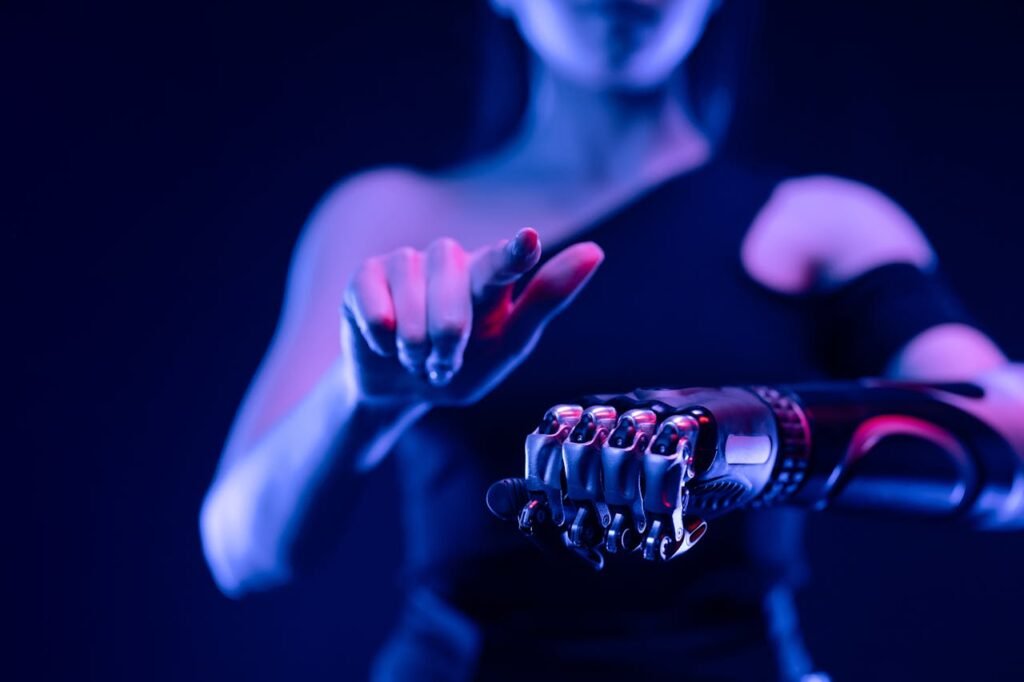
Robobionics was created to solve a local problem with a local solution. Our prosthetics are built for Indian conditions—hot summers, monsoon rain, everyday tasks, and traditional jobs. By using mostly Indian parts, we keep prices low and service high-quality.
Every product we build is tested by real users and improved based on real feedback. Whether it’s the Grippy Mech Finger or the Grippy Bionic Hand, our goal is to create something that truly fits your needs—not just in labs, but in real life.
We work with hospitals, clinics, NGOs, and local centers to make our prosthetics available across India. No matter where you are—from big cities to small villages—we’re working to ensure that you can get access to world-class care without leaving your community behind.
Finger loss changes your life—but it doesn’t define it. You have the power to adapt, grow, and thrive. What lies ahead is not just recovery, but reinvention. You are not broken—you are becoming something new, strong, and unshakable.
Thousands have walked this path and found joy again. You can too. And whenever you need a hand—whether it’s for guidance, tools, or simply hope—Robobionics is here for you.

Prosthetic care in India is changing very quickly.More people are receiving quality devices, more hospitals

Accepting a prosthesis is not only a physical process.It is also an emotional journey filled

Outcome dashboards are becoming one of the most important tools in modern prosthetic clinics.They help

In prosthetic rehabilitation, numbers only matter when they mean something to real people.A test score
Last updated: November 10, 2022
Thank you for shopping at Robo Bionics.
If, for any reason, You are not completely satisfied with a purchase We invite You to review our policy on refunds and returns.
The following terms are applicable for any products that You purchased with Us.
The words of which the initial letter is capitalized have meanings defined under the following conditions. The following definitions shall have the same meaning regardless of whether they appear in singular or in plural.
For the purposes of this Return and Refund Policy:
Company (referred to as either “the Company”, “Robo Bionics”, “We”, “Us” or “Our” in this Agreement) refers to Bionic Hope Private Limited, Pearl Haven, 1st Floor Kumbharwada, Manickpur Near St. Michael’s Church Vasai Road West, Palghar Maharashtra 401202.
Goods refer to the items offered for sale on the Website.
Orders mean a request by You to purchase Goods from Us.
Service refers to the Services Provided like Online Demo and Live Demo.
Website refers to Robo Bionics, accessible from https://robobionics.in
You means the individual accessing or using the Service, or the company, or other legal entity on behalf of which such individual is accessing or using the Service, as applicable.
You are entitled to cancel Your Service Bookings within 7 days without giving any reason for doing so, before completion of Delivery.
The deadline for cancelling a Service Booking is 7 days from the date on which You received the Confirmation of Service.
In order to exercise Your right of cancellation, You must inform Us of your decision by means of a clear statement. You can inform us of your decision by:
We will reimburse You no later than 7 days from the day on which We receive your request for cancellation, if above criteria is met. We will use the same means of payment as You used for the Service Booking, and You will not incur any fees for such reimbursement.
Please note in case you miss a Service Booking or Re-schedule the same we shall only entertain the request once.
In order for the Goods to be eligible for a return, please make sure that:
The following Goods cannot be returned:
We reserve the right to refuse returns of any merchandise that does not meet the above return conditions in our sole discretion.
Only regular priced Goods may be refunded by 50%. Unfortunately, Goods on sale cannot be refunded. This exclusion may not apply to You if it is not permitted by applicable law.
You are responsible for the cost and risk of returning the Goods to Us. You should send the Goods at the following:
We cannot be held responsible for Goods damaged or lost in return shipment. Therefore, We recommend an insured and trackable courier service. We are unable to issue a refund without actual receipt of the Goods or proof of received return delivery.
If you have any questions about our Returns and Refunds Policy, please contact us:
Last Updated on: 1st Jan 2021
These Terms and Conditions (“Terms”) govern Your access to and use of the website, platforms, applications, products and services (ively, the “Services”) offered by Robo Bionics® (a registered trademark of Bionic Hope Private Limited, also used as a trade name), a company incorporated under the Companies Act, 2013, having its Corporate office at Pearl Heaven Bungalow, 1st Floor, Manickpur, Kumbharwada, Vasai Road (West), Palghar – 401202, Maharashtra, India (“Company”, “We”, “Us” or “Our”). By accessing or using the Services, You (each a “User”) agree to be bound by these Terms and all applicable laws and regulations. If You do not agree with any part of these Terms, You must immediately discontinue use of the Services.
1.1 “Individual Consumer” means a natural person aged eighteen (18) years or above who registers to use Our products or Services following evaluation and prescription by a Rehabilitation Council of India (“RCI”)–registered Prosthetist.
1.2 “Entity Consumer” means a corporate organisation, nonprofit entity, CSR sponsor or other registered organisation that sponsors one or more Individual Consumers to use Our products or Services.
1.3 “Clinic” means an RCI-registered Prosthetics and Orthotics centre or Prosthetist that purchases products and Services from Us for fitment to Individual Consumers.
1.4 “Platform” means RehabConnect™, Our online marketplace by which Individual or Entity Consumers connect with Clinics in their chosen locations.
1.5 “Products” means Grippy® Bionic Hand, Grippy® Mech, BrawnBand™, WeightBand™, consumables, accessories and related hardware.
1.6 “Apps” means Our clinician-facing and end-user software applications supporting Product use and data collection.
1.7 “Impact Dashboard™” means the analytics interface provided to CSR, NGO, corporate and hospital sponsors.
1.8 “Services” includes all Products, Apps, the Platform and the Impact Dashboard.
2.1 Individual Consumers must be at least eighteen (18) years old and undergo evaluation and prescription by an RCI-registered Prosthetist prior to purchase or use of any Products or Services.
2.2 Entity Consumers must be duly registered under the laws of India and may sponsor one or more Individual Consumers.
2.3 Clinics must maintain valid RCI registration and comply with all applicable clinical and professional standards.
3.1 Robo Bionics acts solely as an intermediary connecting Users with Clinics via the Platform. We do not endorse or guarantee the quality, legality or outcomes of services rendered by any Clinic. Each Clinic is solely responsible for its professional services and compliance with applicable laws and regulations.
4.1 All content, trademarks, logos, designs and software on Our website, Apps and Platform are the exclusive property of Bionic Hope Private Limited or its licensors.
4.2 Subject to these Terms, We grant You a limited, non-exclusive, non-transferable, revocable license to use the Services for personal, non-commercial purposes.
4.3 You may not reproduce, modify, distribute, decompile, reverse engineer or create derivative works of any portion of the Services without Our prior written consent.
5.1 Limited Warranty. We warrant that Products will be free from workmanship defects under normal use as follows:
(a) Grippy™ Bionic Hand, BrawnBand® and WeightBand®: one (1) year from date of purchase, covering manufacturing defects only.
(b) Chargers and batteries: six (6) months from date of purchase.
(c) Grippy Mech™: three (3) months from date of purchase.
(d) Consumables (e.g., gloves, carry bags): no warranty.
5.2 Custom Sockets. Sockets fabricated by Clinics are covered only by the Clinic’s optional warranty and subject to physiological changes (e.g., stump volume, muscle sensitivity).
5.3 Exclusions. Warranty does not apply to damage caused by misuse, user negligence, unauthorised repairs, Acts of God, or failure to follow the Instruction Manual.
5.4 Claims. To claim warranty, You must register the Product online, provide proof of purchase, and follow the procedures set out in the Warranty Card.
5.5 Disclaimer. To the maximum extent permitted by law, all other warranties, express or implied, including merchantability and fitness for a particular purpose, are disclaimed.
6.1 We collect personal contact details, physiological evaluation data, body measurements, sensor calibration values, device usage statistics and warranty information (“User Data”).
6.2 User Data is stored on secure servers of our third-party service providers and transmitted via encrypted APIs.
6.3 By using the Services, You consent to collection, storage, processing and transfer of User Data within Our internal ecosystem and to third-party service providers for analytics, R&D and support.
6.4 We implement reasonable security measures and comply with the Information Technology Act, 2000, and Information Technology (Reasonable Security Practices and Procedures and Sensitive Personal Data or Information) Rules, 2011.
6.5 A separate Privacy Policy sets out detailed information on data processing, user rights, grievance redressal and cross-border transfers, which forms part of these Terms.
7.1 Pursuant to the Information Technology Rules, 2021, We have given the Charge of Grievance Officer to our QC Head:
- Address: Grievance Officer
- Email: support@robobionics.in
- Phone: +91-8668372127
7.2 All support tickets and grievances must be submitted exclusively via the Robo Bionics Customer Support portal at https://robobionics.freshdesk.com/.
7.3 We will acknowledge receipt of your ticket within twenty-four (24) working hours and endeavour to resolve or provide a substantive response within seventy-two (72) working hours, excluding weekends and public holidays.
8.1 Pricing. Product and Service pricing is as per quotations or purchase orders agreed in writing.
8.2 Payment. We offer (a) 100% advance payment with possible incentives or (b) stage-wise payment plans without incentives.
8.3 Refunds. No refunds, except pro-rata adjustment where an Individual Consumer is medically unfit to proceed or elects to withdraw mid-stage, in which case unused stage fees apply.
9.1 Users must follow instructions provided by RCI-registered professionals and the User Manual.
9.2 Users and Entity Consumers shall indemnify and hold Us harmless from all liabilities, claims, damages and expenses arising from misuse of the Products, failure to follow professional guidance, or violation of these Terms.
10.1 To the extent permitted by law, Our total liability for any claim arising out of or in connection with these Terms or the Services shall not exceed the aggregate amount paid by You to Us in the twelve (12) months preceding the claim.
10.2 We shall not be liable for any indirect, incidental, consequential or punitive damages, including loss of profit, data or goodwill.
11.1 Our Products are classified as “Rehabilitation Aids,” not medical devices for diagnostic purposes.
11.2 Manufactured under ISO 13485:2016 quality management and tested for electrical safety under IEC 60601-1 and IEC 60601-1-2.
11.3 Products shall only be used under prescription and supervision of RCI-registered Prosthetists, Physiotherapists or Occupational Therapists.
We do not host third-party content or hardware. Any third-party services integrated with Our Apps are subject to their own terms and privacy policies.
13.1 All intellectual property rights in the Services and User Data remain with Us or our licensors.
13.2 Users grant Us a perpetual, irrevocable, royalty-free licence to use anonymised usage data for analytics, product improvement and marketing.
14.1 We may amend these Terms at any time. Material changes shall be notified to registered Users at least thirty (30) days prior to the effective date, via email and website notice.
14.2 Continued use of the Services after the effective date constitutes acceptance of the revised Terms.
Neither party shall be liable for delay or failure to perform any obligation under these Terms due to causes beyond its reasonable control, including Acts of God, pandemics, strikes, war, terrorism or government regulations.
16.1 All disputes shall be referred to and finally resolved by arbitration under the Arbitration and Conciliation Act, 1996.
16.2 A sole arbitrator shall be appointed by Bionic Hope Private Limited or, failing agreement within thirty (30) days, by the Mumbai Centre for International Arbitration.
16.3 Seat of arbitration: Mumbai, India.
16.4 Governing law: Laws of India.
16.5 Courts at Mumbai have exclusive jurisdiction over any proceedings to enforce an arbitral award.
17.1 Severability. If any provision is held invalid or unenforceable, the remainder shall remain in full force.
17.2 Waiver. No waiver of any breach shall constitute a waiver of any subsequent breach of the same or any other provision.
17.3 Assignment. You may not assign your rights or obligations without Our prior written consent.
By accessing or using the Products and/or Services of Bionic Hope Private Limited, You acknowledge that You have read, understood and agree to be bound by these Terms and Conditions.